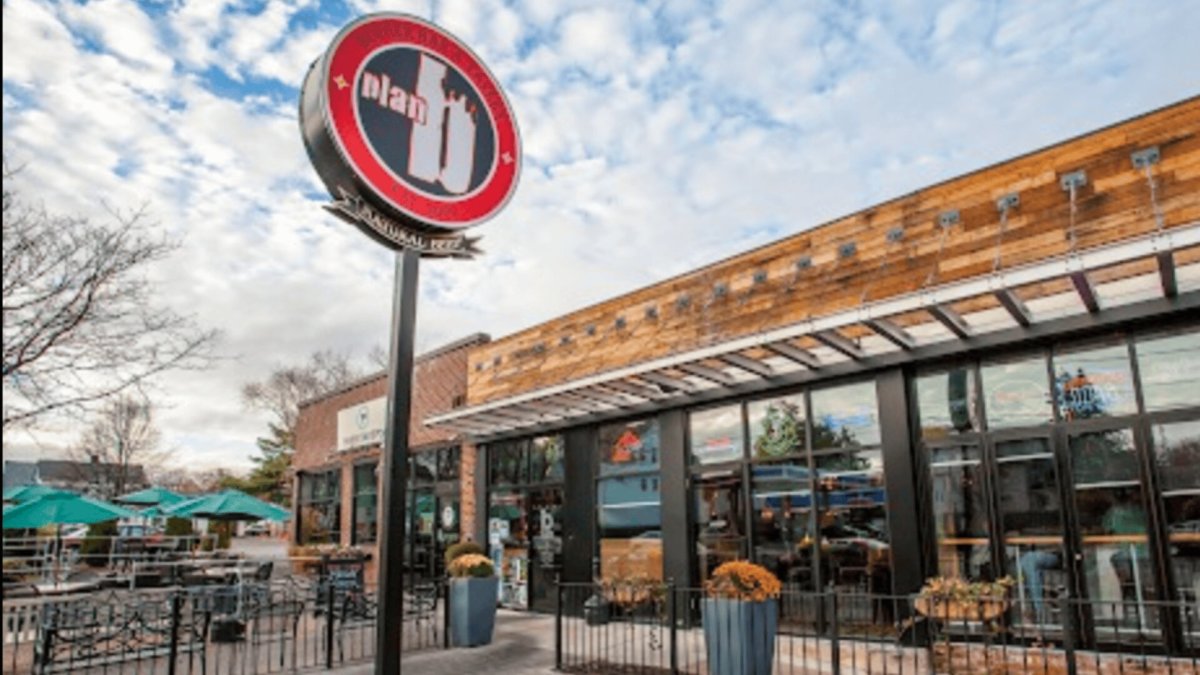While lots of people have tried, its not easy to create a differentiated hamburger experience. New England chain Plan b has managed to do that since it opening its first Connecticut location almost 20 years ago.
The chain, which was a favorite of mine when I live in the region has a very simple menu. Burgers are ordered “pink” or “no pink,” and the entire focus is on the quality of the beef being used.
Related: After closing stores, Kroger makes even deeper cuts
Plan b explained how that came about on its website.
“America’s favorite food started in our home state of Connecticut, with the famous Louis’ Lunch offering their traditional burger since 1895, still in their ‘no ketchup allowed’ way. Before opening in 2006, we traveled near and far eating burgers, visiting ranches, learning what made the best burger. Our goal was simple – the best burger we could find in the way burgers were meant to be enjoyed,” the chain shared.
That philosophy worked as Plan b, in my opinion, became a destination burger chain which led to it growing from a single restaurant to 11 locations, including one at the Basketball Hall of Fame in Springfield, Mass.
With a large list of bourbons, along with local beer, Plan b wasn’t fancy, but it was a regular date night or family afternoon place for a meal during the decade or so we live near the chain.

Image source: Plan b.
Plan b has struggled
From its height of 11 locations, Covid and related issues had already shrunk the chain to six locations. That number is being cut in half as Plan b Restaurants shared on August 27 that it plans “a strategic realignment of its footprint, choosing not to renew leases that have reached term.”
That was not an easy choice for the company.
“This decision reflects a balance between fiscal responsibility and staying true to the experience our guests and teams deserve,” said founder and CEO Allie J. Gamble.
The chain’s West Hartford and Hartford, Conn. as well as its Springfield, Mass, Hall of Fame location. will close by August 31.
“Looking ahead, the company remains focused on delivering its boutique dining experience, one that emphasizes craft, care, and community. These values have defined Plan b from the beginning and continue to guide its future,” the company shared on social media.
Gamble made it clear that the chain has a long-term plan to return to growth.
“Plan b is here to stay,” said Gamble. “This period in time will be used to step in closer and stay focused on what we do best, bringing people together over great food, bourbon, and beer. We’re making sure the next chapter of our story is even stronger.”
More Restaurants
- Fast-food burger chain opened in 1934, closes 200 restaurants
- Regional favorite ice cream brand gets new life after bankruptcy
- Del Taco, up for sale, borrows a page from Taco Bell
This transition, she shared, reflects both the business realities of operating long-term locations while preserving the brand’s commitment to high-touch service, local connection, and exceptional food and drink.
All employed team members will receive severance pay. Leadership is working to place team members at other restaurants.
Plan b gift cards will continue to be honored at all remaining locations.
Timeline for Plan b Burger
- 2006: First location opens in West Hartford, followed by Simsbury & Glastonbury.
- 2010: Named one of Inc. magazine’s fastest-growing private companies.
- 2013 : Opens new location in Fairfield (converted post office).
- 2020: Opens Southington location, just before COVID-19 pandemic.
- 2025 (May 18): Southington closes; last-day proceeds donated to Bread for Life.
- 2025 (Aug 31): Hartford, West Hartford, and Springfield (MA) locations closing.
- Remaining CT locations: Milford, Glastonbury, Simsbury.
Why are local restaurants struggling?
“Consumers are growing increasingly cautious about their spending habits. This shift in behavior, particularly among middle- and lower-income households, has had a direct and negative impact on restaurant foot traffic and average ticket sizes,” a Fitch Report shared.
A separate Fitch analysis suggests more ongoing problems for the restaurant industry.
- Higher tariffs on imported ingredients and higher wages threaten U.S. restaurant profitability.
- Food and labor each account for about one-third of restaurant costs, so simultaneous inflationary pressures, coupled with weakening economic growth and slowing consumer discretionary spending, pose a significant risk to the sector.
- This situation could lead to significant distress for some operators, particularly those with small scale or levered balance sheets.
- Weakening consumer sentiment is expected to further reduce discretionary spending throughout 2025, as persistent inflation pressures disposable income, and tariffs exacerbate food inflation.
- Fitch projects U.S. Food-Away-From-Home expenditures may experience a low-single-digit decline, versus previous expectations of flat to slightly positive growth.
- Traffic is projected to decline by a single-digit percentage, while the average ticket is expected to remain flat.
“The ultimate impact of the tariff will depend on food basket exposure and workforce composition. However, operators in the full-service segment, particularly those that are highly leveraged, may be most at risk, as consumers trade down to limited-service alternatives or dine more at home,” research firm shared.
The National Restaurant Association (NRA) took a more upbeat view.
“Restaurants, particularly those in the fullservice category, are working to recapture pre-pandemic levels of on-premises traffic. Providing customers with higher perceived value and placing greater importance on the overall dining experience could positively affect sales. That includes emphasizing service and hospitality and providing an atmosphere that promotes socialization,” shared NRA Senior Vice President of Research Hudson Riehle.
Related: Whole Foods decision won’t be popular with employees (or shoppers)
#Upscale #Burger #Chain #Closing #Locations